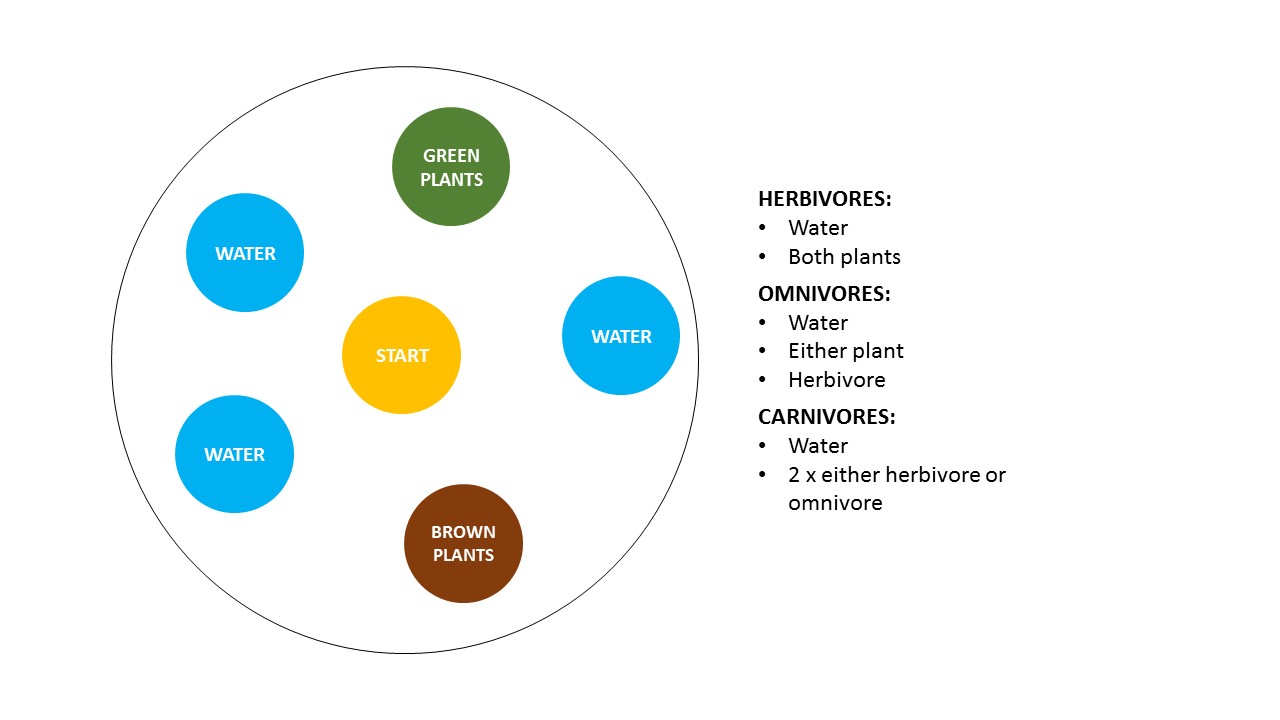In this game, students experience predator-prey relationships firsthand and learn that different animals have different food needs.
All animals, including humans, need water and food to survive, but the specific food that an organism eats differs.
Herbivores are organisms that eat only plant material.
Omnivores eat both plants and animals.
Carnivores eat other animals.
A food chain describes the interaction between who is eating whom in an environment. For example, insects eat plants, squirrels eat insects and nuts, and eagles eat squirrels. Although these organisms do not only eat one thing, a food chain focuses on a line of predators and prey.
In your backyard, there is a variety of wildlife and the animals need water and food to survive just like humans. This activity explores how the interactions of predators and prey affect each other’s population size.

 copy.jpg)
